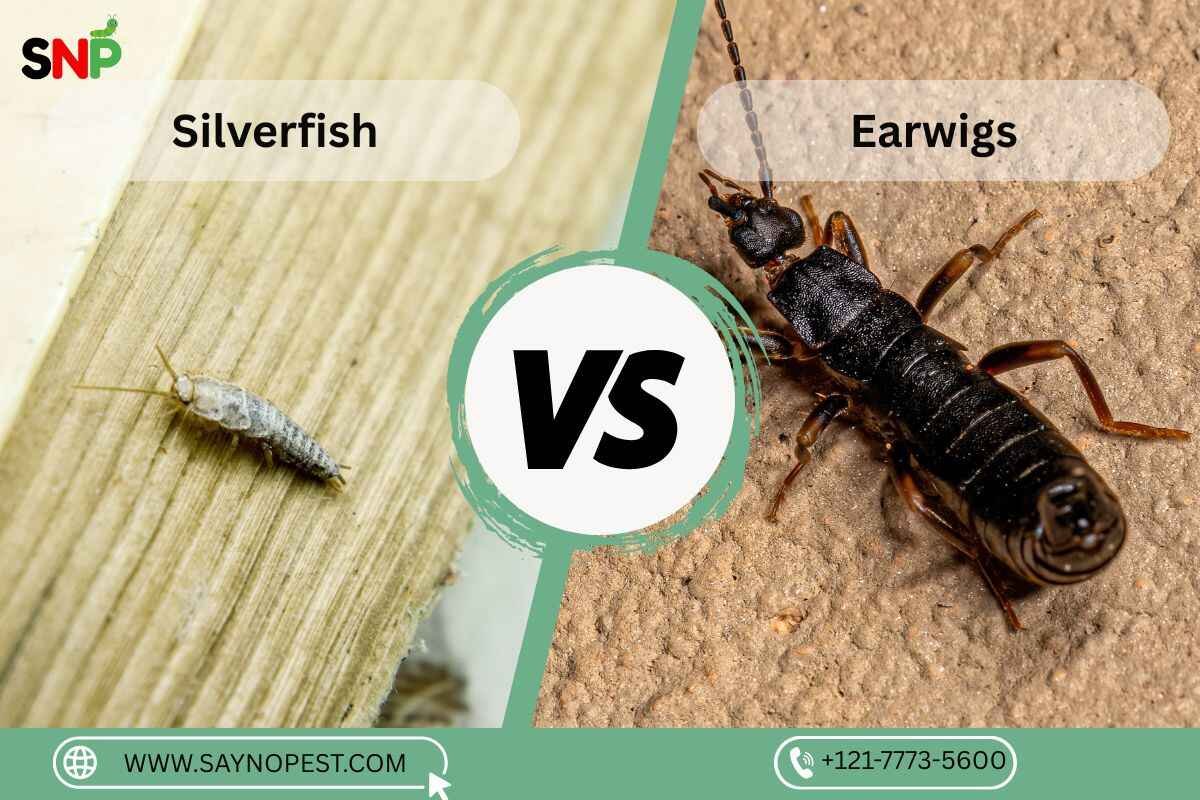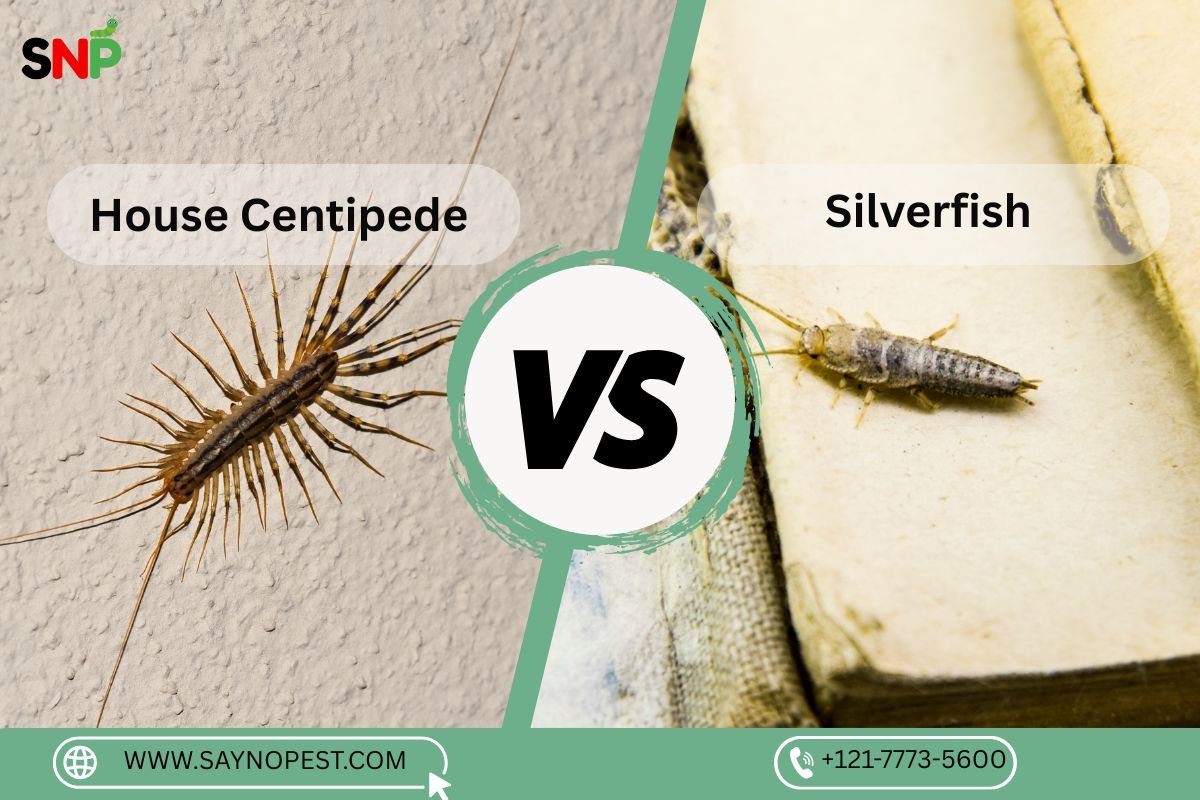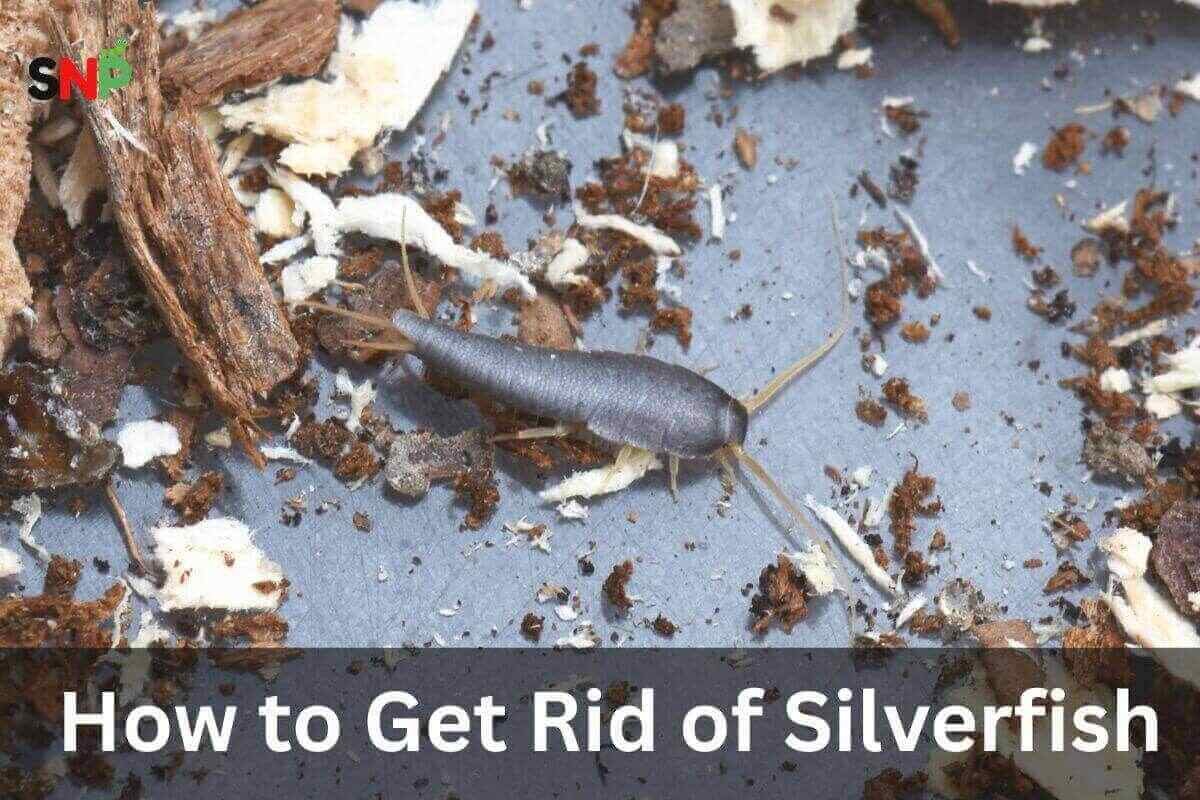Household pests remain a mystery to many people since both silverfish vs earwig often create a misinterpretation of their appearance. Household invasion occurs from these pests, although various distinctions stand out, ranging from their physical characteristics to the types of harm they create. The resolution of earwig infestation and silverfish infestation demands complete knowledge about these bugs as a beginning point for successful management practices. This article explains all essential aspects of silverfish vs earwig by describing their patterns of appearance as well as their threats and effective defensive methods against them in homes.
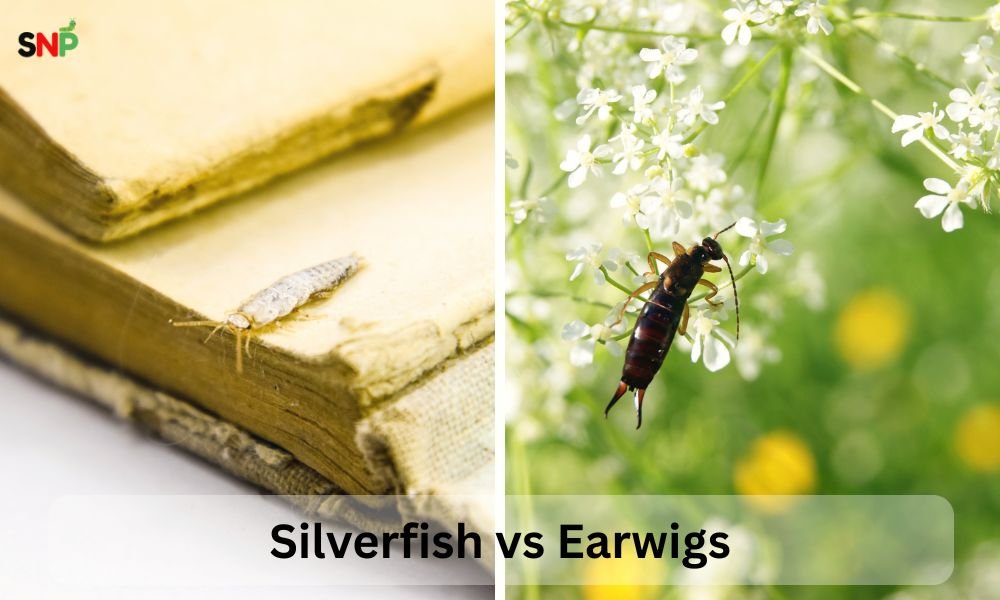
Silverfish vs Earwig: Appearance, Size, Color, Habitat, and Diet
Appearance and Size
- Silverfish: Silverfish are so called because of the silvery color and fish-like shape of their bodies. Adults are 1/2 to 1 inch (12 to 28 mm) long, with three elongated, thread-like appendages projecting from their posteriors and without wings. The body is covered with short hairs, which make it have a glossy and wet appearance.
- Earwigs: On the other hand, earwigs are usually dark brown, with some being light brown, black or even black with an orange head. In length, their measurements range from 1/4 to 1 1/4 inches (6 to 25 mm). Earwigs have a feature like pair of instruments of a pincer shape with hard materials at the end of their abdomen. Although they rarely use them, some earwigs are capable of airborne flights.
Color
- Silverfish: Silvery gray, shiny, and almost metallic126.
- Earwigs: They are brown to black in color; however, some of them may have reddish heads while others present striped legs.
Habitat
- Silverfish prefer to stay in Shadowy, damp spots indoors, such as basements, bathrooms, and attics, or places having the Moist air conditions. They usually attract toward the areas that have paper, starchy material, or fabric.
- On the other hand, earwig are outdoor creatures who like living in areas like under mulch, rocks, or in rotting wood. Nevertheless, they can enter your premise when the local climate becomes hot, dry, or rainy, and they look for wet, cool places such as laundries and bathrooms.
Diet
- The dietary habits of silverfish are limit to the consumption of the starch and protein in the household items: paper, glue, wallpaper, books, and some fabrics. The most common reason for this kind of damage is the consumption of stored documents, wallpapers, and old books.
- Earwigs are omnivorous animals. They live by feeding on rotting plant matter, flowers, and on some occasions, insects. They are more likely to snack on garden plants, but their damage indoors usually small compared to that of the silverfish.
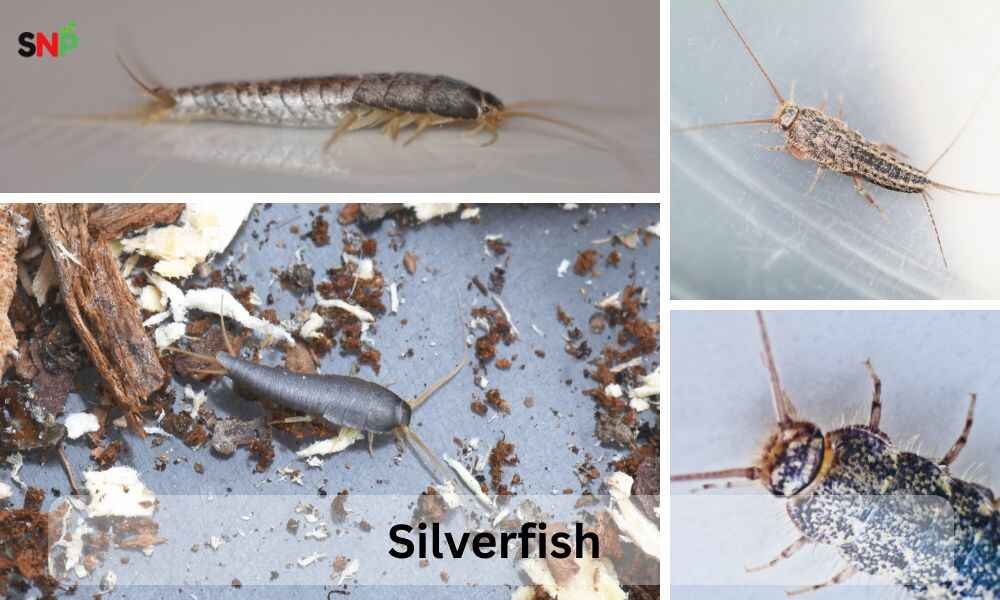
Earwig Infestation and Silverfish Infestation
Both earwig and silverfish infestation can be pretty creepy; however, these pests are know to appear in different ways:
Earwig infestation
Earwigs are more of outside creatures, so you are likely to see them only when they are present in large numbers, especially in the backyards or under the mulch. They might be attracted to humid areas indoors, but generally, they appear during specific months and when Shifts in climate. The presence of visible physical clusters, especially at night, will serve as a good hint of the situation.
Silverfish infestation
These pests are not only shy but also very mobile, so finding them can be quite difficult. You are going to have to look for the signs as in that they are making holes in books, wallpaper, or cardboard, that you are also going to notice yellow stains on the fabric or paper. If you spot the quick, slithery little insects out and about in dark corners, bingo! you know you have a silverfish infestation.
Both earwig infestation and silverfish infestation are more common in homes with high humidity and clutter, but the damage they cause is different-earwigs may harm plants, while silverfish target paper and textiles.
Dealing with Both the Pests
The control of earwig infestation and silverfish infestation can be of a combined nature and include prevention, monitoring, and directed treatments.
For Silverfish:
- Humidity Reduction: Employ dehumidifiers and introduce aeration to high humidity zones.
- Seal the Entrance: Closing up all the gaps around your windows, doors, and baseboard with caulk is an effective method of preventing them from entering the house.
- Destroy Food Sources: Keep books, papers, and clothes in airtight containers. Quickly clean up crumbs and spills as soon as they occur.
- Use Traps and Natural Deterrents: Placing a sticky trap is a great way; alternatively, you can use a glass jar trap which is covered with tape. Other methods involve the use of cedar oil and leaving some dry bay leaves as repellants.
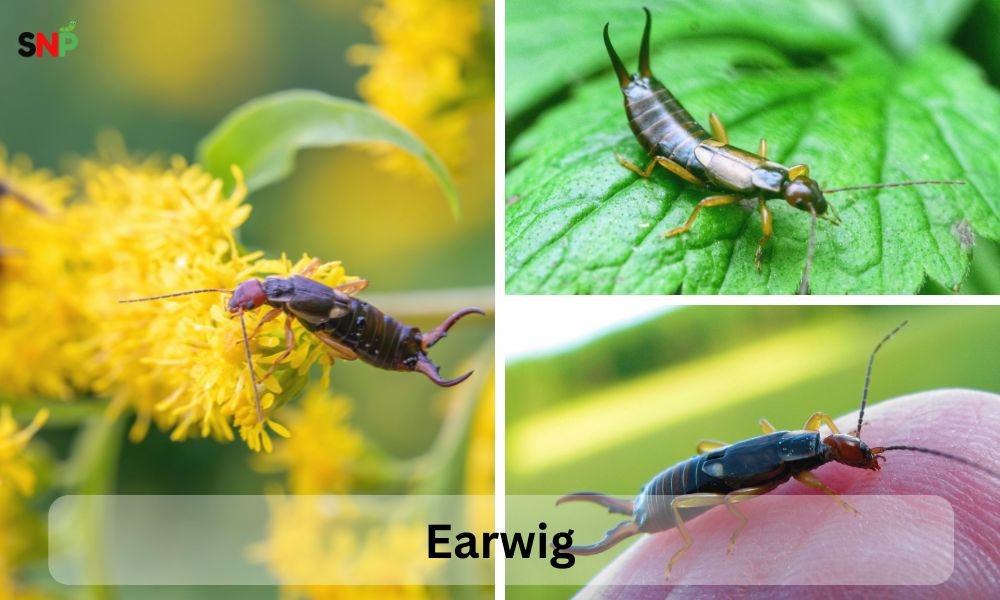
For Earwigs:
- Moisture Decreasing: Repair the leaks and minimize the watering of the garden. Keep bathrooms and basements dry at home.
- Remove Outdoor Hiding Spots: Remove mulch, leaves, and other materials accumulated near the foundation of your house.
- Traps: Dig shallow cans, fill them half with oil or beer and place them in the soil to catch earwigs. Damp newspapers rolled up can also used to attract and collect earwigs for ultimate disposal.
- Natural and Chemical Treatments: Safety weapons for the home are things like dusting diatomaceous earth around the doors and windows. In a critical time of tons of earwigs, a good recommendation is spraying Spinosad insecticides or getting the job done by professionals.
Regular cleaning, decluttering, and moisture control are the best defenses against earwig infestation and silverfish infestation.
Conclusion
Home protection requires knowledge about the different characteristics between silverfish vs earwig during their confrontation. These insect species share no resemblance except for their physical appearance because their habitats change differently, and they have alternate eating habits and distinct damage patterns. Silverfish infestation leads to damage to household possessions, but earwig infestations remain primarily outdoors until they enter your house accidentally.
Earwig infestation combined with silverfish infestation requires immediate attention because the signs of both pests should not be ignored. Quick pest control step,s including mold prevention and leak blockin,g followed by purpose-built trap measures will defend your house against pests. Pest control services will efficiently resolve both persistent silverfish infestations and earwig problems so your property remains safeguarded against these pests.
Having knowledge which sets silverfish apart from earwigs establishes your superiority in pest management practices. Keeping watch and responding swiftly with prevention measures helps your home stay completely protected against unwanted intruders.
